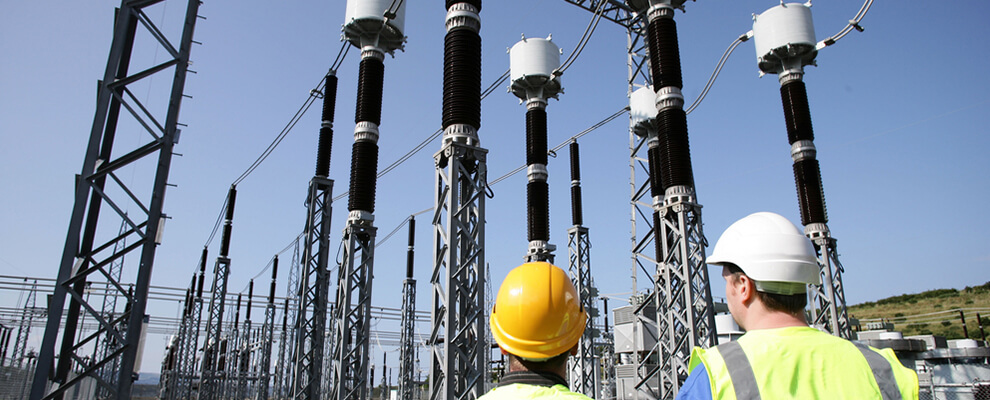Energy transmission infrastructure is the lifeblood of an economy. When energy infrastructure fails, so does everything else. To secure more contracts and position your business as the first choice in energy infrastructure deployment and maintenance, you need to reduce downtime to the absolute lowest figure possible. One of the most effective ways is to shift from a routine maintenance schedule to a preventative maintenance approach. In addition, timing your upgrades and adding capacity will make your grid more resilient.

Keys to Maintaining Energy Transmission Infrastructure
Proactive Maintenance Saves Time and Money
The most effective way to improve maintenance protocols while saving money is to switch to a proactive maintenance approach. What’s the difference? Traditional maintenance is reactive. You detect a problem and send someone out to address it. Grid devices you’ve installed have a maintenance schedule to follow, which may prevent some issues but will ultimately lead to wasted effort. A device that works completely fine gets unnecessary maintenance, while one that’s about to fail might not be scheduled for months.
In contrast, a more proactive approach uses data to determine what devices need maintenance. Instead of sticking to regular intervals, you detect problems before they happen and address them before energy infrastructure fails. This method is also known as predictive maintenance. Switching to this approach could cut your maintenance costs by a quarter. When properly implemented, a predictive maintenance system can maximize uptime. What does it take to set up this kind of system?
Smart Sensors
In order to predict when a component will fail, you need information about that component’s condition. More modern infrastructure devices come equipped with sensors that can relay information about a device back to your operations center. For example, temperature sensors could alert you to devices that regularly run above recommended operating temperatures, potentially making them fail sooner. Vibration sensors can detect subtle oscillations and warn you when excessive vibration occurs.
What should you do if you have a lot of devices that don’t have these sensors? Older equipment can be retrofitted rather easily. While it does impose a short-term labor cost, the cost of the sensors themselves is very low. Long-term savings more than make up for the initial investment. However, sensors are only the first step. You still need a way to gather that data and understand it.
Data Collection and Analysis
Sensor data can be stored to a locally attached device that can be recovered later manually. However, given the sheer number of devices in any electric grid, this isn’t the most cost-effective approach. An alternative is to use GSM modules to wireless transmit data across long distances. If you have devices located in remote locations where GSM networks can’t reach, there are wireless line-of-sight options that allow you to create your own wireless network over many kilometers.
Your goal is to get a live feed from all your data sources. Your data can then be fed into analytics software. These programs use machine learning algorithms to process data and derive insights from it. Bear in mind that early on, your system won’t be able to predict much. However, with time, the system will learn when a device needs maintenance. You can automate notifications to maintenance staff so that they only take action on devices that need it.
Make Upgrades That Matter
Experts worldwide agree that grids need to get smarter. Energy transmission is changing from highly centralized energy production facilities to distributed energy generation through renewables scattered across the landscape. When your infrastructure devices are due for an upgrade, take a moment to evaluate whether upgrading them is actually worthwhile. Will the energy demand at that location remain the same? Where would your upgrades have the most impact?
While upgrading to more modern equipment can reduce maintenance costs, it may not be necessary at every location. Furthermore, some equipment can require more complex maintenance, even if it is less frequent.
Over-Allocate Capacity on New Installations
Climate goals have pushed nations towards more electricity use. Electric vehicles, for instance, will demand lots of electricity to replace the fossil fuels they currently use. Adding capacity is absolutely necessary, and over-allocating capacity today will reduce maintenance tomorrow. Devices are more likely to fail when they operate close to their limits. By installing new equipment with higher energy transmission capacity, you can minimize maintenance in the short term while making your installations more attractive to private and public buyers.
Invest in People
Poorly performed maintenance is just as bad as no maintenance. As the grid evolves, so must your technicians and engineers. For example, renewables have brought DC power generation back into the conversation, and talks of high-voltage DC lines are reemerging as DC current needs to travel long distances from viable renewable energy sites to dense cities where consumers are located. These transmission methods use different components and have distinct operating conditions.
Invest in training for your team so that they can perform effective maintenance and reduce errors. Ensure that your lead engineers are aware of new technologies and emerging transmission methods so that you can stay ahead of the curve.
Go Completely Digital
The strategies we’ve looked at today are all part of a greater concept: digital transformation. By making your internal business practices digital, driven by data, you make your company more responsive and accurate. The actions you take are surgical, rather than general. You take them at the right time instead of reacting. Overall, you become more efficient, which makes your pricing more competitive.
Contact SAAB RDS to book a meeting with one of our digital transformation experts. We’ve helped many businesses to adopt digital technology and turn their analog operations into efficient digital environments. Yours can, too.
